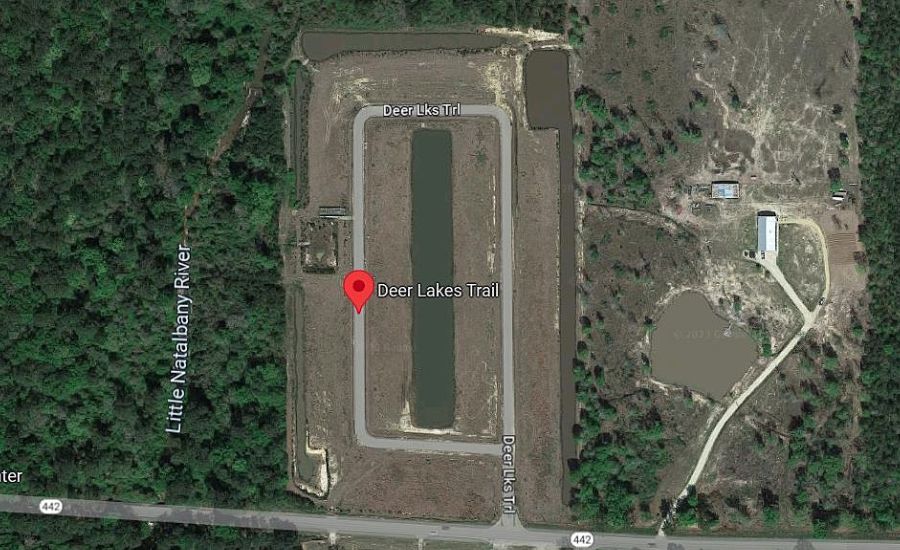Brothefrs Drowning In Pond Near Baton Rouge Airport 1960s Lessons & More
Introduction
The heart-wrenching story of two young brothers who tragically drowned in a pond near Baton Rouge Brothefrs Drowning In Pond Near Baton Rouge Airport 1960s remains a somber reminder of how quickly accidents can occur, altering lives forever. Although this tragedy took place many years ago, it still resonates with those who remember it. The pond, located near the airport, became the scene of an unimaginable loss for the family, leaving a lasting mark on the local community.
In this post, we will revisit the tragic drowning incident, exploring the events surrounding that fateful day, the emotional impact on the Baton Rouge community, and how this story serves as an important lesson in water safety and awareness.
The Tragic Loss of the Fisher Boys in Baton Rouge: A Community’s Heartache
The drowning of the Fisher boys in the 1960s remains one of Baton Rouge’s most poignant and sorrowful chapters, leaving an indelible emotional impact on the community. For those who lived through the event, it represents a stark reminder of life’s unpredictability and the devastating consequences of a tragic accident.
As we reflect on this event, it is essential to not only recount the details of the tragedy but to also honor the lives that were lost and the lasting emotional toll it took on their family, friends, and the local area. The community, shaken by this incident, came together in the wake of the tragedy, offering support, comfort, and solidarity to those affected.
This event is a powerful reminder of the fragility of life and how quickly a seemingly peaceful moment can turn into a crisis. It underscores the importance of water safety and awareness, as well as the need to protect and cherish those closest to us.
The Legacy of the Fisher Boys’ Tragedy: Impact and Lessons Learned

Decades later, the story of the Fisher boys continues to serve as a stark reminder of the importance of vigilance around bodies of water. This tragic incident, though painful to recall, offers valuable lessons in water safety that can help prevent similar tragedies from occurring in the future.
The event also strengthened the bonds within the Baton Rouge community, highlighting the collective spirit that can emerge in times of grief and loss. Through remembering and reflecting on this story, we ensure that the Fisher boys’ lives are honored and that their memory continues to influence the community’s approach to safety and care.
Ultimately, the legacy of this tragedy emphasizes the preciousness of life and the enduring strength of a community that rallies together in times of sorrow. Let their story be a lasting reminder of the need for awareness, compassion, and a commitment to preventing accidents, ensuring that such a heartbreaking loss is never forgotten.
The Fisher Boys Drowning in Baton Rouge During the 1960s: A City in Transition
In the 1960s, Baton Rouge was a city in the midst of significant change, reflecting the broader shifts occurring across the American South. Like many towns at the time, Baton Rouge was experiencing social and economic changes, while also holding on to its rich local traditions. The Mississippi River, which flows through the city, was not only a defining feature of the landscape but also a central part of the daily lives of its residents. For many families, fishing along the river wasn’t just a recreational activity; it was a way of life, providing both sustenance and a sense of community that had been passed down through generations.
During this period, life along the river was a blend of both celebration and danger. It was common for children and young adults to spend their afternoons fishing on the banks or navigating the river in small boats. While the river served as a source of joy, it also posed inherent risks, as many safety practices we take for granted today were not yet widely recognized or implemented. The absence of modern safety equipment, combined with the occasional inexperience of those venturing out on the water, created a dangerous environment that could be unforgiving.
The Tragic Drowning of the Fisher Boys
The heartbreaking drowning incident involving the Fisher boys in Baton Rouge remains a sorrowful memory for the community. Though some details may have faded with time, the tragedy’s emotional impact continues to resonate deeply with those who remember it. A group of young boys, eager for a day of fishing, embarked on a seemingly ordinary outing along the river. However, their day would take a devastating turn when their small boat capsized.
While the precise circumstances leading to the boat’s capsizing remain uncertain, there are various theories. Some believe the sudden strength of the river’s current or a gust of wind may have caught them off guard. Others speculate that the boat might have been overloaded, compromising its stability. Regardless of the exact cause, the boys found themselves struggling in the water, unable to save themselves. Tragically, several of them drowned before help could reach them, marking an indelible moment of grief for their family and the Baton Rouge community as a whole.
Lasting Impact on the Community
The loss of the Fisher boys left a lasting imprint on the Baton Rouge community. Beyond the sorrow felt by their families, the tragedy also brought attention to the risks of fishing and boating in the area, especially among young people. As a result, the incident highlighted the need for greater awareness of water safety and proper precautions when spending time on the river. Although it was a somber turning point, it also spurred conversations about how to protect future generations from similar accidents. The community, while forever changed, emerged with a greater appreciation for both the beauty and the dangers of the natural world.
Community Mourning and Reflection: The Legacy of the Fisher Boys Tragedy
The tragic drowning of the Fisher boys in Baton Rouge during the 1960s left a lasting emotional mark on the local community. In a close-knit town where families were deeply connected, the loss was felt by all, as if the fabric of the community itself had been torn. The funerals were marked by solemnity, with mourners gathering to share their grief and extend their support to the affected families. This collective mourning brought the community together in a powerful expression of solidarity, as residents, united in their sorrow, sought to find ways to prevent future tragedies.
In the wake of this heartbreaking incident, there was a heightened awareness of the dangers that the river posed. The tragedy served as a wake-up call, prompting both parents and community leaders to take action. Efforts were made to improve water safety education and to enforce stricter safety measures for activities on or near the river. The incident sparked conversations about the need for enhanced supervision whenever children and adolescents engaged in fishing, swimming, or other water activities, as it became clear that while the river was a cherished part of Baton Rouge’s identity, it carried inherent risks.
Evolving Water Safety Measures in Baton Rouge

The drowning of the Fisher boys prompted significant changes in how Baton Rouge approached water safety, leading to long-term cultural shifts in the community. One of the key changes was a growing emphasis on the use of life jackets for all water activities, particularly for young people. Additionally, there was a greater focus on ensuring that adults were present to supervise children when they were near or in the water, recognizing that prevention was critical.
In response to the tragedy, local community organizations began offering swimming lessons to equip children with the necessary skills to navigate the water safely. This was part of a broader initiative to promote water safety education and emergency preparedness, ensuring that residents were better equipped to handle any potential water-related dangers.
Over time, the community’s relationship with the river also evolved. While it continued to be an integral part of Baton Rouge’s culture and way of life, there was a growing respect for its power and unpredictability. Families began to approach the river with a greater sense of caution and vigilance, emphasizing safety without losing sight of the river’s role in the community’s heritage.
Lasting Impact: Honoring the Memory of the Fisher Boys
Decades after the tragic drowning, the memory of the Fisher boys remains alive in the hearts of Baton Rouge residents. For the families who endured this unimaginable loss, the pain may never fully dissipate, but their stories have become an essential part of the community’s collective history. These stories have been passed down through generations, reminding new residents of the need for respect and caution when interacting with the river.
The river, once a place of innocent joy, has become a symbol of both remembrance and resilience. Locals view it not just as a natural resource, but as a quiet tribute to those who were lost. It stands as a reminder of the fragility of life, but also of the enduring strength of the Baton Rouge community. The memory of the Fisher boys continues to foster a shared sense of connection and responsibility among residents, reinforcing the importance of water safety and the strength of the community’s bond.
The Beloved Fisher Boys of Baton Rouge
The Fisher boys were beloved figures in their Baton Rouge community, known for their warmth, adventurous spirit, and infectious joy. Their presence was a source of happiness for family, friends, and neighbors, and their sudden, tragic deaths left a profound void. Described as lively and always smiling, the boys symbolized youthful exuberance and the thrill of adventure. Sadly, it was this very zest for life that led them to a fatal encounter with the waters near Harding Blvd.
Their story is not just about loss, but also a powerful reminder of how swiftly life can change. The tragedy serves as a poignant lesson in the importance of water safety, highlighting the need for vigilance and caution in environments that can quickly become dangerous. The legacy of the Fisher boys continues to resonate, reminding the Baton Rouge community of the fragility of life and reinforcing the commitment to safer practices around water.
Emergency Response to a Tragedy
When the news of the Fisher boys’ drowning near Harding Blvd broke, emergency responders sprang into action. Firefighters, police officers, and water rescue teams were quickly mobilized, aiming to address the heartbreaking situation as swiftly as possible. However, despite their immediate response, time constraints and the treacherous nature of the waters made the recovery efforts difficult. The murky conditions complicated visibility and hindered the search, adding to the challenge.
After hours of relentless searching, the bodies of the boys were finally recovered. The sight of their lifeless forms devastated their family and the entire community, underscoring the harsh reality of drowning incidents. While local responders acted with professionalism and urgency, the tragic outcome raised important questions about water safety practices and preparedness in the region. This incident highlighted the critical importance of timely intervention and the unpredictable dangers of water, underscoring the need for continued education and awareness around water safety.
Swift Search Efforts for the Fisher Boys
The community’s response to the tragedy was immediate and determined. Local emergency teams worked tirelessly to locate the boys, with rescue divers entering the murky waters, fully aware of the potential dangers lurking beneath the surface. The operation was methodical and urgent, with divers and patrol boats working together to search every possible area.
In addition to the on-the-ground efforts, drones were deployed to survey the area from above, enhancing the search efforts and providing real-time data to guide the operation. The entire Baton Rouge community came together, offering support to the rescue teams and providing resources to assist in the search. This collective response exemplified the deep sense of unity and compassion that defined Baton Rouge, with neighbors and strangers alike working towards a common goal. The search for the boys, though ultimately unsuccessful, demonstrated the strength and resilience of the community in the face of unimaginable loss.
This tragic event continues to serve as a powerful reminder of the importance of water safety, the need for swift emergency responses, and the vital role of community solidarity during times of crisis.
Addressing Water Safety in Baton Rouge
The tragic drowning of the Fisher boys near Harding Blvd in Baton Rouge highlights the critical need for stronger water safety measures in the community. It is essential for everyone—parents, educators, local leaders, and residents—to take responsibility for increasing awareness about the dangers of water activities, especially for children and young people. One of the most effective ways to prevent future tragedies is through education.
Integrating water safety and swimming lessons into school curriculums can play a key role in equipping children with essential skills for navigating local waterways safely. These programs should focus not just on swimming but also on understanding the potential hazards of the river, lake, or pond environments, such as currents, water temperature, and the importance of wearing life jackets. Educating young people about these risks will empower them to make better decisions when they engage in water activities.
Additionally, parents who are equipped with proper knowledge can provide better supervision during family outings by the water. Encouraging a culture of safety and responsibility around water will ensure that children understand the importance of caution while still enjoying these recreational spaces. By fostering such education within the community, Baton Rouge can work together to prevent future drownings and safeguard its residents, particularly the most vulnerable.
Lasting Impact on Water Safety Policies
The tragic loss of the Fisher boys has had a profound effect on water safety awareness in Baton Rouge, sparking important discussions about how to prevent similar incidents in the future. The event has underscored the need for stronger water safety infrastructure and has propelled local authorities and community organizations to consider more robust safety measures.
In response to this heartbreaking incident, local leaders have been motivated to push for changes aimed at improving water safety across the region. The lessons learned from this tragedy are now influencing policy decisions, ensuring that future generations will benefit from enhanced safety protocols and better supervision. This includes advocating for more visible signage about water dangers, increased access to life-saving equipment, and further community-based education initiatives.
The collective goal is to prevent such accidents from happening again. By taking proactive steps, Baton Rouge can honor the memory of the Fisher boys and ensure that local waterways are safer for everyone. The community’s ongoing commitment to improving water safety will protect not only future generations but also contribute to a culture of safety and responsibility that prioritizes the well-being of all who enjoy the natural resources in the area.
Final Words
The tragic drowning of the Fisher boys near Harding Blvd in Baton Rouge serves as a powerful reminder of the risks associated with water activities, particularly for children and young people. While this heartbreaking event has left a lasting impact on the community, it has also sparked critical conversations about the importance of water safety.
The lessons learned from this tragedy have led to a renewed focus on education, awareness, and the implementation of better safety measures to protect future generations. As a community, Baton Rouge has the opportunity to come together, learn from the past, and work toward a safer environment for everyone who enjoys its waterways.
Frequently Asked Questions (FAQs)
1. What happened to the Fisher boys in Baton Rouge?
In the 1960s, a group of young boys went fishing near Harding Blvd in Baton Rouge. Tragically, their boat capsized, and several of the boys drowned before help could arrive. The incident profoundly impacted the local community and heightened awareness of water safety.
2. How did the community respond to the drowning incident?
The drowning of the Fisher boys prompted a significant response from the community. Local emergency responders acted swiftly to search for the boys, but despite their efforts, the tragedy sparked a broader conversation about the importance of water safety. Families, leaders, and organizations in Baton Rouge came together to advocate for better water safety practices and educational programs to prevent future incidents.
3. How can parents ensure their children’s safety around water?
Parents can help ensure their children’s safety by educating them about water hazards, teaching them how to swim, and always supervising them while they are near or in the water. Wearing life jackets, avoiding overloading boats, and understanding river currents are essential precautions to prevent accidents.
4. Has the tragedy influenced local water safety policies?
Yes, the drowning incident led to a shift in local water safety policies. Community leaders have focused on implementing programs that prioritize water safety education, better supervision during water activities, and improved infrastructure to keep people safe while enjoying the area’s rivers and lakes.
5. What can be done to prevent future drownings in Baton Rouge?
To prevent future drownings, it’s important to focus on community education, implement water safety programs in schools, and ensure that children and adults alike have the necessary skills to navigate local waterways safely. Additionally, local authorities must continue to improve safety measures such as signage, rescue equipment, and emergency response systems.
Key Facts
- The drowning of the Fisher boys in Baton Rouge occurred in the 1960s, leaving a lasting impact on the community.
- The tragedy highlighted the risks associated with water activities, especially for children, leading to a shift in how the community addresses water safety.
- In response to the tragedy, local authorities and community leaders have advocated for improved water safety policies, including educational programs and enhanced supervision.
- The community came together to support the grieving families and initiate changes aimed at preventing future incidents.
For more Information About blog visit our site Francher Way





